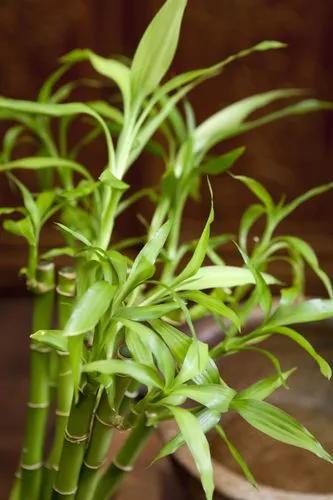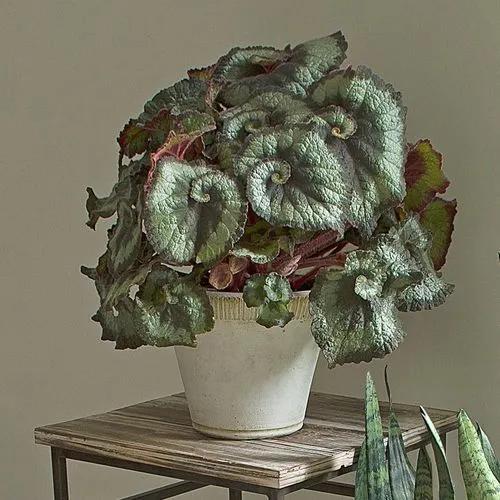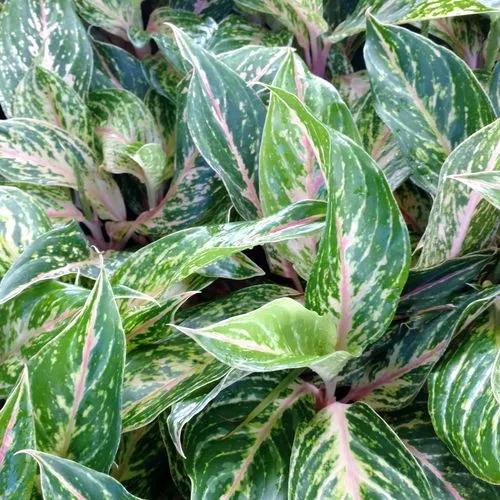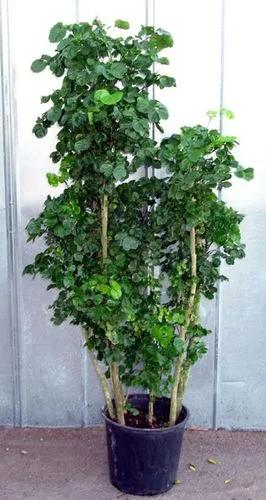Fiddle Leaf Fig is a perennial evergreen tree, a part of the mulberry family. It originated as an epiphyte placed on top of the crowns of other trees. Today, in natural conditions, the plant is an independent tree, with a height of up to 15 meters. Fiddle Leaf Tree is native to tropical West Africa. Fiddle Leaf Fig is not very difficult to keep and care for - that is why it has become the №1 houseplant on social media. This tree is a beautiful decoration for any interior as it has a spectacularly unusual appearance due to its large and glossy foliage.
Fiddle Leaf Fig Care
Ficus Lyrata Bambino



Fiddle Leaf Fig is a fast-growing, tropical tree with very small, striped, bare shoots and thin, weakly branched stems. The plant branches first grow parallel to the ground and only then bend to the top. It is commonly grown as a houseplant because of its stunning big leaves, which resemble fiddles.
Separately grown plants can reach a height of 40-50 ft (12-15 m). Fiddle Leaf Fig's height indoors is no more than 10 ft (3 m), but it can grow up to 10 inches (25 cm) every year with good care.
How to Care for the Plant

Water

Check the soil to know whether your Ficus needs watering. If it is slightly dry, it’s high time to water! In summer, water the Fiddle Leaf Fig 3 times a week. In winter, watering once a week is sufficient. Water should cover the entire surface of the potting soil. After 30 minutes, drain any water that has run down into the tray.
Fig needs a high level of humidity. Regular sprinkling with mild water and a warm shower in the summer is necessary to maintain the correct humidity level. You can also place a container with water next to the plant.
Make sure you use soft water at room temperature - we recommend using standing or filtered water. If the water is hard, white streaks will form on the leaves, and the potting soil will gradually become salted.

Pruning

Pruning should be done at the end of the winter before new leaves start developing. Trimming the top of the trunk encourages Ficus Lyrata branching and also allows you to manage the size and shape of the plant. When cut, the plant releases a slightly poisonous milky juice that can cause irritation, so be careful. Requires supportive stands.

Fertilizer

Fertilize for a maximum of 6 months once every 30 days and use a mineral compound fertilizer. Liquid and granular mineral fertilizers for indoor foliage plants enhance the active growth of lyre-shaped ficus. Fertilizers are applied once every two weeks during watering at the active growth stage. Don’t forget to dilute the recommended fertilizer dose. The plant shouldn't be fed 2-3 weeks after repotting.

Sunlight

Ficus will feel comfortable in a well-lit window, loggia, or garden plot where it is protected from direct sunlight. Choose either an East or West facing window. Ficus needs bright, diffused light from a western or eastern window. The plant can be placed behind a curtain on a table next to the window if you have south-facing windows. It can tolerate shade, but this will severely affect its growth rate and ornamental qualities.
In winter, additional light will be required so that the tree will continue to grow. Turn the tree once a week to ensure its symmetrical development.

Soil

A ready-made substrate with a neutral pH level is an excellent potting mix for this plant. Your Fiddle Leaf Fig will thrive best in soil that contains 1 part peat moss/coco coir, 1 part perlite, and 2 parts organic soil.

Propagation

Ficus cuttings are propagated in the spring or early summer. Cuttings of no longer than 6 inches (15 cm) in length, clipped off during crown formation, are utilized as planting material.
The branch is placed in water disinfected with activated carbon, and after the appearance of the first roots, it is planted in a potting mix as usual.

Temperature

Fiddle Leaf Fig is a tropical plant that thrives in hot climates. In the summer, the room temperature should be at least 70-82°F (22-28°C); while in the winter, keep it 65-68°F (18-20°C), with a minimum temperature of 54°F (12°C).

Container

It should not be put in a big container because the roots of this plant prefer to grow in confined spaces. Ficus should be transferred into a larger pot if many roots appear in the drainage holes – it indicates that the plant is root-bound.
Repot every couple of years. However, larger specimens can be repotted regularly by replacing the top layer of the substratum. Transplant a young plant in early spring each year and an adult plant (over 4 years old) once every two years (if the roots fill the entire pot). The soil mixture should be made up of equal proportions of potting soil, peat, and sand. You can even find special soil mixtures for Ficus.

Fun fact

It kills other plants. In the wild, the Fiddle Leaf Fig will often begin its existence on the top of another tree. Ficus lyrata sends down roots into the ground as it develops, encircling and finally strangling the host tree.

Additional

Fiddle Leaf can saturate the air in the room with oxygen, clean it of harmful impurities, and still fill the home with beneficial energy has been confirmed by NASA!

Popularity

314,185 people already have this plant 21,576 people have added this plant to their wishlists

Common pests

The following pests can infest the plant: False scales, spider mites, scales, and mealybugs. Use organic pesticides to keep the pests away from your plant. Mind that if you check the plant from time to time, mist it with something like neem oil every month, and keep any new plant away from your Ficus Lyrata for a few days, you will control the pest issues for a long time.

Frequent diseases

- Brown discoloration on the leaves is caused by regular water stagnation in the potting soil.
- Leaf fall can occur if the room is too hot and the humidity is low.
- Slow growth is associated with a lack of nutrients or too little light.

Botanist’s tips

Discover more plants with the list below
Related articles






